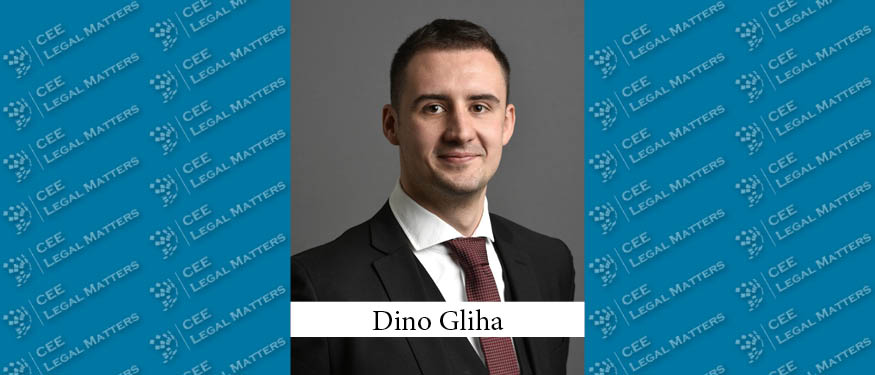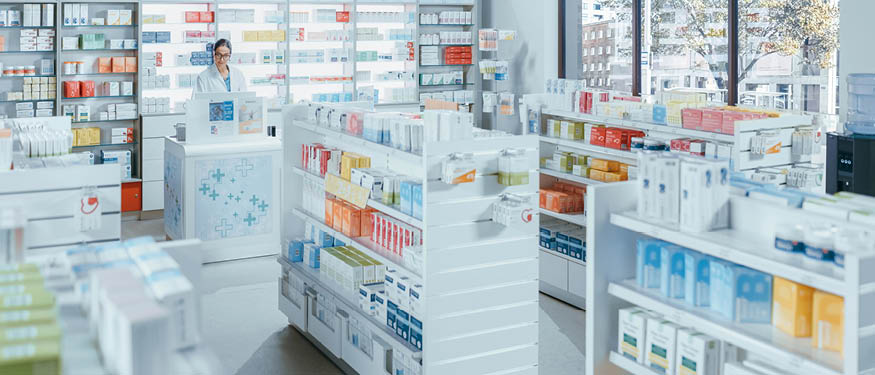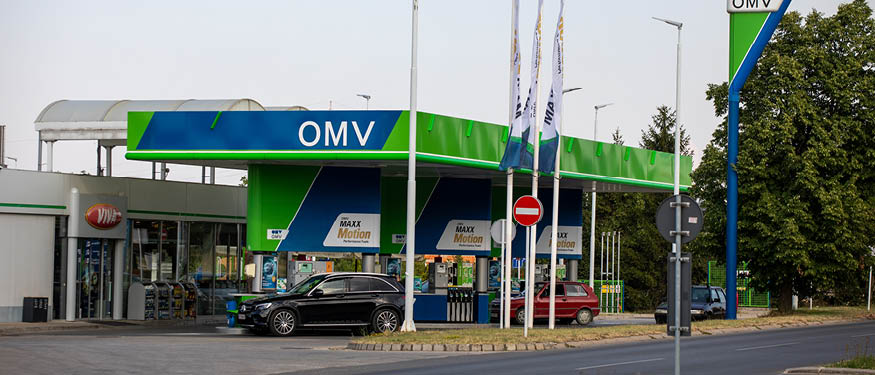Earlier in 2024, DLA Piper published its Medical Devices Advertising: CEE Comparison Guide, which reviews advertising regulations for medical devices in Austria, Croatia, the Czech Republic, Hungary, Poland, Romania, Slovakia, and Slovenia. Life sciences team members who worked on the guide spoke with CEE Legal Matters about some of the regulatory differences across CEE and the practical implications for businesses.
In this interview:
- Amalia Musat, Counsel, DLA Piper Romania
- Andrzej Balicki, Partner, DLA Piper Poland
- Irina Macovei, Counsel, DLA Piper Romania
- Jolanta Dabrowicz, Counsel, DLA Piper Poland
- Petr Samec, Senior Associate, DLA Piper Czech Republic
- Veronika Appl, Counsel, DLA Piper Austria
CEELM: As background, why did you choose to focus on this specific area of medical device advertising, and what made it particularly relevant for the CEE region in your view?
Balicki: I’d highlight three fundamental points. First, advertising is critical to the medical sector. Second, when looking at a global perspective, the health, beauty, and personal care sector is a leader in advertising spending, not just regionally but worldwide. Third, advertising for medical devices is not regulated at the EU level. While there is a general ban on misleading advertising under Article 7 of the European Union Medical Devices Regulation, there are no specific rules or detailed guidance on how to implement these rules in practice.
Samec: It’s particularly interesting for us because this is a new development. In the Czech Republic, we’ve had advertising regulations since 1995. While advertising for medicinal products has been here since 2006, the regulation for medical devices was introduced in May 2021 and is quite recent, which makes it especially noteworthy for us.
Macovei: In the realm of life sciences regulation, medical devices have often been overlooked. The category encompasses everything from bandages and needles to toothbrushes to medical equipment, with many complex products in between. Today, medical devices also cover software and digital tools used in hospitals, which has led to changes in how these devices are advertised. The focus is now on preventing misleading advertising and ensuring that claims reflect the actual properties of the devices. For us in Romania, this represents a significant shift. Before 2021, we had no specific regulations for advertising medical devices, but our authorities are now moving toward a regulatory approach similar to that of medicines. This is a substantial change for us.
Appl: In addition to what’s been said before, I’d like to highlight that we’re part of the international DLA Piper community. We regularly observe trends and differences across various countries, focusing on comparing different jurisdictions rather than concentrating on just one. Our goal was to simplify the legal landscape for medical devices across the CEE markets by creating a comprehensive advertising guide for the CEE region. As Irina mentioned, regulations in Austria and other countries include numerous laws that can be challenging for clients to navigate. Our aim was to provide a clear overview while emphasizing the importance of assessing the specific details and advertising claims of each medical device.
CEELM: What were the main commonalities/trends shared across the surveyed CEE jurisdictions?
Dabrowicz: In nearly all jurisdictions, medical device regulations cover several topics due to the diverse range of devices and the expectations from both the sector and the public. These regulations often include technical requirements such as disclaimers and mandatory disclosures. The structure of medical device advertising tends to resemble that of medicinal products.
Balicki: In Poland, regulations were drafted in a way that closely mirrors parts of the medicines law, with some sections nearly copy-pasted. The initial draft of the regulation was intended to address medical devices, but it still contained literal references to medicines.
Samec: This also applies to the Czech Republic, where we have a single act covering both medicinal products and medical devices, whereas some sections regulating medical devices almost copy medicinal products.
Macovei: In my opinion, it’s all about efficiency – why reinvent the wheel when you already have a draft to work from? I agree that this approach appears to be the case in Romania. The challenge lies in getting our authorities to effectively implement these regulations. While the current approach seems reasonable, the wide variety of devices makes implementation difficult. We’re still in the beginning stage, so it remains to be seen how it will unfold.
Balicki: I’d also add that, in Poland, there is a positive outlook because having regulations for medical devices that are similar to those we’ve had experience with for a long time helps us understand and predict how authorities will act. This familiarity should make it easier for companies to operate. Although there are established practices, these products aren’t just a copy-paste job, and there are still aspects that need to be discussed with the authorities.
Musat: The area I am focused on – advertising of self-care medical devices – was not addressed when the EU regulation came into force in terms of advertising. However, the local authority took this as an opportunity to impose in the implementation legislation a specific pre-approval procedure for advertising materials and to regulate advertising channels. We also anticipate that advertising for medical devices will become more restricted and focused on providing correct and complete information to consumers. As the regulatory environment becomes increasingly stringent, we expect significant delays in the procedures due to the additional burden on the already busy regulator, which is handling compliance on medicines’ advertising as well.
Macovei: It’s important to differentiate between countries in CEE when it comes to regulations. Some countries have had regulations in place for a long time and have seen them implemented effectively. On the other hand, in countries such as Romania, while we have the legislation, it only outlines principles without specific implementation norms. This creates uncertainty, as we can only anticipate potential outcomes – both positive and negative. All of us here are experts in life sciences regulation and are familiar with the challenges of medicine advertising. The question remains whether there is sufficient capacity to review all applications and if it’s necessary to apply these regulations to all products on the market. We’ll have clearer answers once the regulations are fully drafted.
Appl: I completely agree. From an Austrian legal perspective, we’ve had regulations in place for quite some time but they are spread across different laws. The main one is the Medical Devices Act, which makes a distinction between who you can advertise to, distinguishing between healthcare professionals and consumers. There are also differences depending on the type of medical device being advertised. Additionally, general rules of our Unfair Competition Act apply, with the overarching principle that advertising must never be misleading. However, the exact details of what constitutes a misleading claim may remain unclear, especially as there is currently little substantial case law in Austria, making it challenging to assess potential issues in advance.
CEELM: You mainly focus on local legislation. Do you expect that the topic will be regulated at the EU level anytime soon?
Macovei: Nothing that I’m aware of indicates that an EU-wide regulation is on the horizon. It would be beneficial to have such a regulation but there is none being drafted currently. This is partly because local regulations are being developed independently, and we don’t even have a unified approach for medicines. Member states have chosen to handle this as part of their national approaches, with only a few limited exceptions for general advertising rules. Beyond that, it remains largely a national matter.
CEELM: What were the most distinguishing elements that stood out when looking at the specifics?
Appl: I’ll start with the commonalities – I think a common factor across CEE countries is the distinction between advertising to healthcare professionals and to consumers. The differences lie in how advertising should be conducted. For example, in Austria, the Medical Devices Act specifies which types of medical devices cannot be advertised to consumers, in particular products that require a doctor’s prescription. Further, there are also certain rules on the nature of the advertising message, in particular, that it must be primarily informative and factual, focusing on providing objective information, and that comparative advertising is not permitted.
Samec: In most CEE countries, regulations for advertising to healthcare professionals are distinguished from regulations for the general public. We have found it interesting that for example in Slovakia, there is no such distinction at all. Recently, we had several clients dealing with medical device samples, and we found that regulation is quite varied: in half of the countries, such as Hungary and Croatia, it is regulated, while in Austria, Poland, and Slovakia, it is not. A recent client request about the provision of samples in quantities highlighted that while this is well-regulated in the Czech Republic, it remains less regulated in other countries.
Musat: In Romania, the distinction between advertising toward the general public and healthcare professionals is becoming more defined, with a notable change being the requirement for preapproval of advertising materials. Since the legislation is still evolving, I anticipate the introduction of secondary laws that may regulate certain channels or impose additional content or compliance requirements and more responsibility for the entities responsible for promotion. Local authorities are looking to highly regulated countries like Denmark and France, and we expect similar regulations to be adopted here soon.
CEELM: What are the most important legislative updates on the horizon in terms of medical device advertising that you’re keeping an eye on?
Musat: Currently, we’re expecting secondary legislation in Romania and we keep an eye on the regulator’s approach to procedural and content rules, marketing, and retail activities.
Macovei: We should also keep an eye on any communications from the regulator to see if our authorities consider forming a joint effort or working group to align their approach. While it’s uncertain if this is feasible or even on their radar, it’s something worth monitoring.
Dabrowicz: As for Poland, we’ve received some signals about upcoming changes in advertising regulations for medical products. The Ministry of Health has indicated that it wants to adjust the rules to regulate electronic communications to some extent. While this is crucial for medical products, it could also have implications for medical devices.
Samec: In the Czech Republic, the regulation seems to be settled now, with a general act that comprehensively covers most product-related aspects. Additionally, the regulator has issued several guidelines that, while not legally binding, provide insight into how they will interpret and assess potential breaches of the law. We typically use these guidelines as the foundation for our advice. They include provisions on the distribution of medical device samples and detailed interpretations of advertising to both the general public and healthcare professionals. Given this, we don’t anticipate significant changes on the horizon.
CEELM: Do you think the new regulations will affect the competitive landscape in the medical device industry?
Balicki: We don’t see much influence since the regulations don’t cover that aspect directly. However, the adoption of new medical regulations does require companies to adjust their internal procedures, as mentioned earlier, to align with the new requirements. Companies with extensive experience in medicinal products are generally better equipped to navigate these changes, which can even offer a competitive advantage in certain countries.
CEELM: What changes will medical device companies need to make to their promotional strategies?
Dabrowicz: All clients now need to ensure that materials are reviewed at the local level, as a global review alone is no longer sufficient. The adoption of these laws typically requires new internal procedures, and it’s generally easier for companies with larger portfolios to adapt, as they can often replicate some of their existing processes.
Musat: In principle, apart from the content of the materials, companies should put in place contractual documentation with advertising partners which should clearly set the content guidelines and outline the contractual responsibilities of each party. Additionally, implementing a pre-approval procedure will be important to ensure all materials comply with the new regulations before they are released.
It’s also worth noting that some companies have recruited regulatory professionals with experience from more regulated medicine sectors, which often involves bringing in individuals from companies familiar with strict regulations. In Europe, the advertising of prescription drugs is allowed in strict conditions only for healthcare professionals. The new recruits are likely to bring a wealth of knowledge from these more regulated environments, which will be valuable in navigating the new requirements.
Macovei: Building on that, this represents a significant shift for companies that were not previously regulated. They will need to train their staff to understand what qualifies as advertising under the new rules. In the past, they were used to freely communicating with healthcare professionals, but now this will only be permissible under specific conditions. Companies will need to implement new policies and foster a change in mindset to ensure compliance. This transition could involve additional costs and efforts, and might not be as smooth as we’d prefer.
Appl: I see a clear difference in Austria. As regulations have been in place for a few years, companies already familiar with the Austrian market are aware of the restrictions on advertising. Although training employees on new regulations can be challenging, it becomes less of an issue once internal policies are established. Companies entering the Austrian market are often unfamiliar with the national regulations and need to acquire this knowledge quickly, as ignorance of local regulations cannot prevent penalties.
CEELM: Now that the guide is out, what will be the next focus for the life sciences team of DLA Piper?
Balicki: We’re not done with the topic of advertising regulations for medical devices yet. We plan to organize a webinar to develop the topic further, with our clients and other guests invited to join.
Macovei: It will be interesting to observe how the digital landscape, particularly software as a digital device, evolves. The pandemic has accelerated advancements in this area, and it will be crucial to see how these developments are regulated and how authorities enforce the new legislation. Key regulatory aspects will include advertising practices, data protection, cybersecurity, and emerging developments in AI. These changes are expected to drive significant health improvements and offer much to look forward to in the future.
















